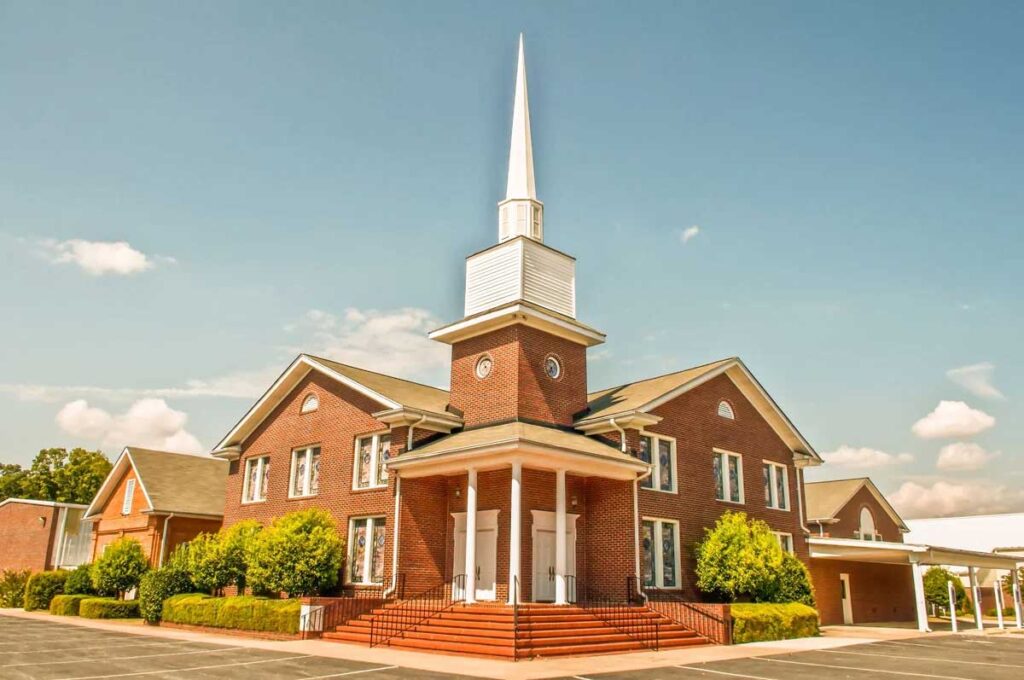Understanding Fire Safety in Churches, Temples, Mosques, and Synagogues

Houses of worship, whether they be churches, temples, mosques, or synagogues, serve as sanctuaries for spiritual gatherings and communal worship. Ensuring the safety of congregants within these sacred spaces is paramount. In this article, we delve into the stringent fire protection requirements outlined by the National Fire Protection Association (NFPA) and explore the measures necessary to uphold fire safety in places of assembly.
Defining Assembly Occupancies:
According to NFPA 101®: Life Safety Code®, an assembly occupancy is a space designed for the gathering of 50 or more individuals for various purposes, including worship, entertainment, or deliberation. Understanding this definition is fundamental as it sets the groundwork for implementing fire safety protocols tailored to these environments.
Calculating Occupant Load:
Determining the occupant load of a house of worship is crucial for establishing appropriate fire safety measures. NFPA 101 provides guidelines for calculating occupant load based on factors such as square footage, seating configurations, and room layouts. Whether it’s open floor areas, bench-type seating, or fixed seating arrangements, every space must adhere to specified occupant load factors to ensure the safety of all individuals present.
Life Safety Evaluations:
For assembly occupancies with occupant loads exceeding 6,000 persons, conducting a life safety evaluation becomes imperative. These evaluations, conducted by approved personnel, assess various safety measures, building systems, and facility management operations to identify and mitigate potential risks. Regular updates and assessments ensure that these sacred spaces remain equipped to handle emergencies effectively.
Means of Egress, Testing, And Maintenance
A fundamental aspect of fire safety in houses of worship is the provision of adequate means of egress. Ensuring that individuals can safely evacuate in the event of a fire is paramount. NFPA guidelines specify the number and placement of exits based on the total occupant load. Additionally, doors must be equipped with panic or fire hardware, remain unlatched during occupancy, and swing in the direction of egress to facilitate swift evacuation.
Specific inspection, testing, and maintenance (ITM) of fire alarms and fire sprinklers must be conducted quarterly, semi-annually, and annually. This ITM and any work performed on the system must be done by certified or qualified personnel.
- NFPA 72: National Fire Alarm and Signaling Code outlines the maintenance and inspection requirements for fire alarm systems.
- Fire sprinkler requirements are detailed in NFPA 25: Standard for the Inspection, Testing, and Maintenance of Water-Based Fire Protection Systems.
Summary
Protecting houses of worship from fire hazards requires meticulous planning, adherence to regulations, and ongoing vigilance. By understanding and implementing the fire safety guidelines outlined by organizations such as the NFPA, communities can ensure that their sacred spaces remain sanctuaries of worship and refuge for all who gather within their walls. Through collective effort and commitment to safety, we can safeguard these cherished landmarks for generations to come.
- Don’t Wait for the Orlando Fire Marshal to Tell You Something’s Wrong - April 1, 2025
- Why More Orlando Businesses Are Switching Fire Alarm Providers - April 1, 2025
- The Hidden Costs of Bad Fire Alarm Monitoring - March 31, 2025
